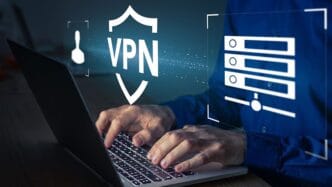The digital world moves fast—and cybercriminals are keeping up. As businesses race to innovate, they’re also opening new doors for fraud. And in this evolving threat landscape, one truth is becoming increasingly clear: identity proofing and verification aren’t just security add-ons. They’re the backbone of trust, compliance, and long-term resilience.
The Real Cost of Weak Identity Measures
Recent data paints a worrying picture. Over two-thirds of organizations have reported a surge in fraud attempts, with large enterprises taking the biggest hit. For businesses with more than 10,000 employees, nearly one in five face over $50 million in annual fraud-related losses. That’s not just a cybersecurity issue—it’s a boardroom-level crisis.
The problem is amplified by modern threats: AI-generated deepfakes, stolen credentials sold on the Dark Web, and increasingly sophisticated phishing techniques. Relying on passwords alone? It’s no longer enough. Half of the companies still using single-factor logins report elevated fraud attempts. But where biometric liveness detection is used, fraud drops significantly—only 21% report issues. Clearly, stronger identity proofing and verification tools are making a measurable difference.
Beyond the Login: The Evolution of Identity Security
For years, businesses have leaned heavily on authentication to protect access—essentially checking that someone can enter a system. But now, we must go further. Identity proofing and verification ask a more critical question: Is this person who they claim to be?
Let’s break it down:
- Identity proofing happens during onboarding or account creation. It’s about linking a real person to a claimed identity using trusted documents, like a passport or driver’s license.
- Identity verification continues over time. It checks, repeatedly and often silently, that a returning user is still legitimate—using everything from behavioral patterns to real-time biometric scans.
Together, these two processes are transforming digital security into something far more intelligent and adaptive.
Everyday Scenarios Where Identity Verification Matters
This isn’t just for banks or government agencies. Across industries, identity verification is now a cornerstone of critical processes. A few examples include:
- Hiring & Workforce Onboarding: Prevent resume fraud and confirm new employees are who they say they are.
- Customer Support & Account Recovery: Enable secure password resets or access recovery without risking account takeover.
- High-Risk Transactions: Protect large payments, withdrawals, or data requests with extra layers of verification.
- Remote Access: For hybrid teams, continuous identity checks reduce the risks of credential misuse or insider threats.
Wherever a digital touchpoint exists, there’s an opportunity to verify identity and prevent fraud before it strikes.
What Signals Can You Trust?
Modern identity verification doesn’t rely on a single signal. Instead, it draws on a blend of technologies, layered together to increase trust and accuracy:
- Document Verification: Scans and analyzes ID documents for signs of forgery, tampering, or theft.
- Biometrics: Uses facial recognition, fingerprints, iris scans, or even voiceprints—hard to fake and easy to automate.
- Video Verification: Live sessions that prove liveness by asking users to perform specific actions.
- Behavioral Biometrics: Tracks typing rhythm or mouse movement patterns that are unique to each user.
- Out-of-Band Authentication: Verifies identity via a separate device or channel (e.g., SMS code or email link).
- Knowledge-Based Questions: While less secure, these can still add value in low-risk scenarios.
Layered together, these signals create a holistic view of user identity—and one that adapts to the level of risk in each interaction.
Why This Matters Now More Than Ever
If you think identity proofing and verification are just about avoiding fraud, think again. Their impact stretches across every part of a modern digital business.
- Fighting Identity Theft: Criminals are using stolen data to open fake accounts and steal money. Proofing stops fraud at the door.
- Boosting Digital Trust: As more services go online—healthcare, finance, education—secure access is essential for customer confidence.
- Meeting Global Compliance: Regulations like GDPR, KYC, AML, and HIPAA all mandate strong identity practices.
- Preventing Account Takeover: Even legitimate users can be hacked. Ongoing verification adds vital protection during high-risk actions like password resets.
- Enabling Zero Trust: This cybersecurity model assumes no user is trustworthy by default. That makes identity verification the foundation of secure access.
- Delivering Great UX: Fast, seamless onboarding with smart verification tools helps businesses grow without scaring users away.
- Protecting Brand Value: Beyond money, breaches damage trust and reputation. Strong identity controls show customers you take their safety seriously.
- Building Long-Term Loyalty: When users feel secure, they’re more likely to stick around and keep engaging with your brand.
The Bottom Line
Traditional logins just don’t cut it anymore. In a world where digital identities are constantly under threat, real-time identity proofing and verification are the only way to secure your business—without sacrificing user experience.
Cybersecurity isn’t a siloed function anymore. It’s directly tied to business success, customer retention, and brand trust. Whether you’re onboarding new users, authenticating returning ones, or guarding sensitive transactions, identity is the new perimeter.
And protecting it is no longer optional—it’s mission-critical.













